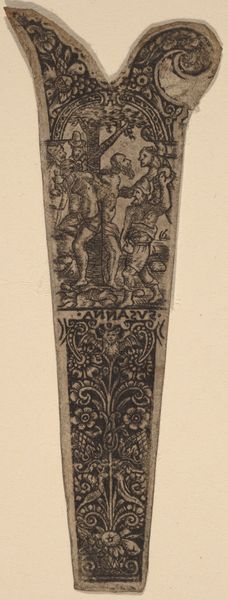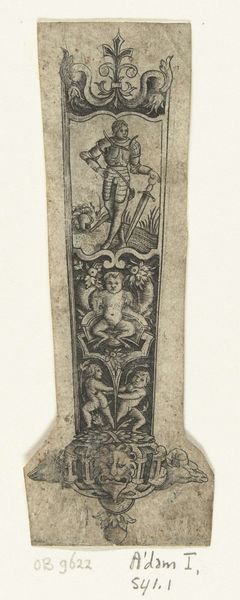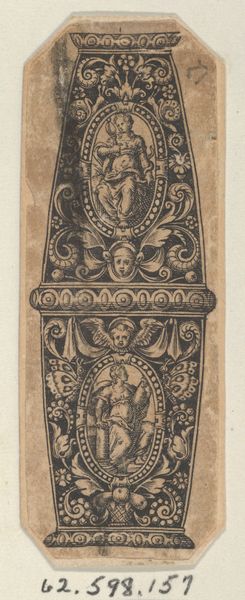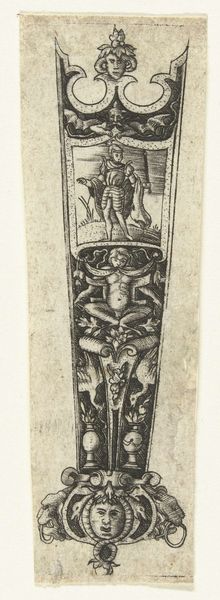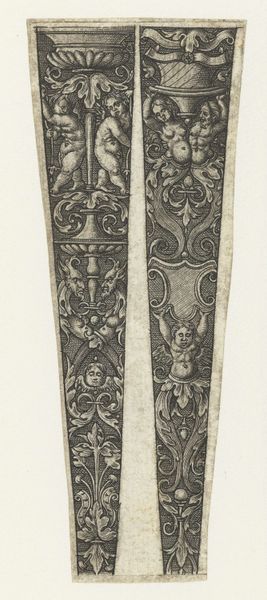
Design for a Knife Handle with a Memento Mori 1580 - 1600
0:00
0:00
drawing, print, engraving
#
drawing
# print
#
mannerism
#
figuration
#
vanitas
#
history-painting
#
engraving
Dimensions: Sheet: 3 11/16 × 15/16 in. (9.4 × 2.4 cm)
Copyright: Public Domain
Editor: This is Johann Theodor de Bry’s "Design for a Knife Handle with a Memento Mori," dating back to the late 16th century. It’s an engraving, showcasing intricate details for such a utilitarian object. I'm struck by the stark contrast between life and death depicted on what would literally be a cutting tool. What catches your eye about this piece? Curator: Immediately, I am drawn to the compartmentalization of the design, articulated through a rigorous application of line and form. The artist uses distinct registers to separate symbolic zones, each framed by elaborate, self-contained borders. Note the semiotic density within each section; how each individual scene contributes to the overall “vanitas” theme, underscoring life's transience through allegorical representation. Editor: It’s like each section tells a different story contributing to one grand narrative. Could you expand on what makes this approach significant within the art of its time? Curator: Consider the artist's approach to layering images. De Bry masterfully merges traditional memento mori symbolism – like the skull – with humanist concerns. This occurs not just thematically, but visually. The balance of verticality achieved, compounded by the meticulous balance within each plane demonstrates a profound control over visual language. How might we decode this artwork solely on these terms? Editor: The way you see the layering offers an analytical richness that isn't immediately evident. It shifts my understanding from merely appreciating the craft to actively interpreting its visual arguments. Curator: Precisely. Close analysis rewards our understanding.
Comments
No comments
Be the first to comment and join the conversation on the ultimate creative platform.
